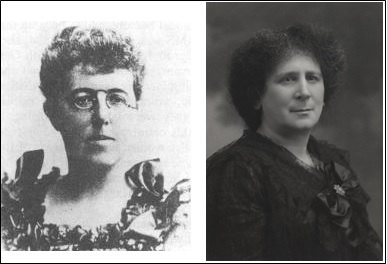- About MAA
- Membership
- MAA Publications
- Periodicals
- Blogs
- MAA Book Series
- MAA Press (an imprint of the AMS)
- MAA Notes
- MAA Reviews
- Mathematical Communication
- Information for Libraries
- Author Resources
- Advertise with MAA
- Meetings
- Competitions
- Programs
- Communities
- MAA Sections
- SIGMAA
- MAA Connect
- Students
- MAA Awards
- Awards Booklets
- Writing Awards
- Teaching Awards
- Service Awards
- Research Awards
- Lecture Awards
- Putnam Competition Individual and Team Winners
- D. E. Shaw Group AMC 8 Awards & Certificates
- Maryam Mirzakhani AMC 10 A Awards & Certificates
- Two Sigma AMC 10 B Awards & Certificates
- Jane Street AMC 12 A Awards & Certificates
- Akamai AMC 12 B Awards & Certificates
- High School Teachers
- News
You are here
The Educational Times Database: Women Contributors
In the early Victorian era, women were conspicuously absent from Cambridge mathematical circles and from the pages of the ET. According to one historian, women “did not feature” in the plans of Cambridge’s administrators, “coming onto the Cambridge scene only in the 1880s” [Crilly 2011, 19]. Actually, women began to be admitted as non-degree students at Cambridge in 1869, with the founding of Cambridge’s Girton College, “one of … Britain’s oldest residential colleges for women and the first to offer a university-level education for women” [McMurran and Tattersall 2017, 5]. Girton College was partly an outcome of Queen Victoria’s 1864 Royal Commission on Secondary Education, which had concluded that girls should have the same level of access to education as boys.
In 1876, Girton admitted two skilled mathematicians who would later become important to the ET: Charlotte A. Scott (1858–1931), a specialist in geometry, and Sarah Marks (1854–1923), a specialist in mechanics and engineering [Tattersall and McMurran 1995, 88–89; Tattersall 1999]. Scott and Marks became close colleagues, and they co-founded the Girton College Mathematical Club with classmates Margaret Ker (1857–1925) and Helen Sheldon (1859–1945), in part to prepare for the Tripos exam [McMurran and Tattersall 2017, 13; Tattersall and McMurran 1995, 90]. At that time, “mathematical textbooks as a rule did not contain pages of diverse exercises,” so the members of the Club—like numerous other British students of mathematics in the late nineteenth century—turned to the ET for practice problems [McMurran and Tattersall 2017, 13; Tattersall and McMurran 2004]. Unfortunately, despite the Royal Commission rulings and the founding of Girton College, women were not automatically allowed to sit for Cambridge exams. Girton student Sarah Woodhead (1851–1912) discovered this contingency in 1873, when she had to obtain special permission from the male examiners and became the first woman to pass the Tripos exam [McMurran and Tattersall 2017, 8]. In 1880, Scott and Marks were among the last cohort of women who had to obtain special permission to sit for the exam, and then “beginning in 1881 women were admitted to Cambridge examinations normally and not just by the courtesy of the male examiners” [Tattersall 1999]. Scott became the first woman to rank as a wrangler in the Tripos exam, while Marks passed with a third-class merit [Tattersall and McMurran 1995, 92].

Figure 7. Charlotte Angas Scott, left, and Sarah Marks (aka Hertha Ayrton), right, achieved a first- and third-class rank, respectively, on the 1880 Cambridge Tripos exam. While Cambridge allowed women to study at its Girton College, the university did not grant degrees to women at that time, so Scott and Marks ultimately obtained degrees elsewhere [MacTutor; Chaplin 1995; Bruton 2020].
In the 1880s, Scott and Marks contributed significantly to the ET. Scott solved a total of twenty-five problems and posed nine [Tattersall and McMurran 2004, 106]. Impressively, Marks was “responsible for submitting 3.5 percent of the solutions appearing between 1883 and 1889,” a total of ninety-five solutions, in addition to submitting twenty-two questions [McMurran and Tattersall 2017, 17]. Scott eventually completed her doctoral dissertation on algebraic geometry under Arthur Cayley’s supervision, although her doctorate came from the University of London, as Cambridge did not then grant degrees to women. She continued to lecture at Girton College until 1885, when she accepted a professorship in the United States [Tattersall 1999]. On a different path, Marks pursued further study in physics, outside of Cambridge, and in 1885 she married a physics professor, William E. Ayrton, F.R.S.(1847–1908), whom she joined as a teacher at Central Technical College in London [Tattersall and McMurran 1995, 96–97]. By the end of the nineteenth century, women were very much “on the Cambridge scene,” and the ET counted thirteen frequent women contributors, a significant if still disproportionate number [Tattersall and McMurran 2004, 106].
Robert M. Manzo (University of North Carolina at Chapel Hill), "The Educational Times Database: Women Contributors," Convergence (March 2021)




